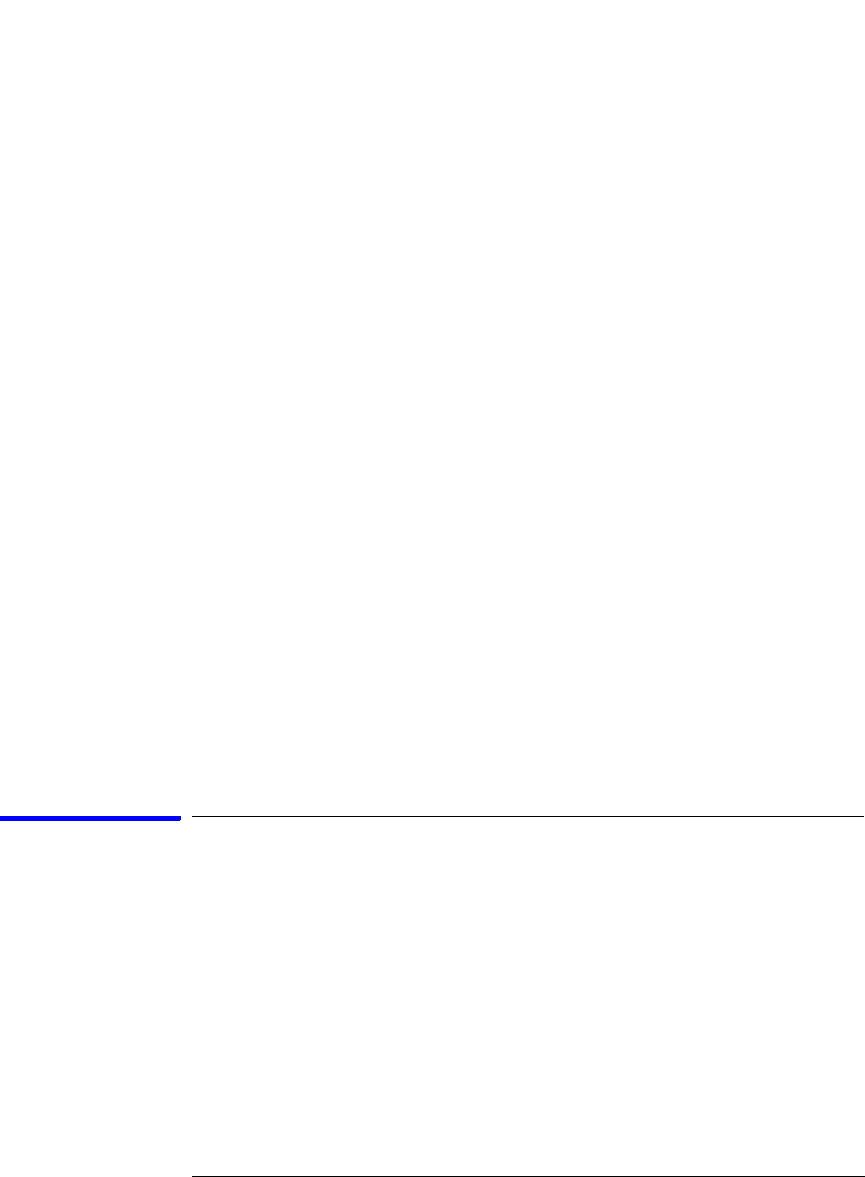User's Manual
Table Of Contents
- Agilent Technologies 16750A/B Logic Analyzer
- Agilent Technologies 16750A/B Logic Analyzer
- Contents
- Getting Started
- Step 1. Connect the logic analyzer to the device under test
- Step 2. Choose the sampling mode
- Step 3. Format labels for the probed signals
- Step 4. Define the trigger condition
- Step 5. Run the measurement
- Step 6. Display the captured data
- For More Information...
- Example: Timing measurement on counter board
- Example: State measurement on counter board
- Task Guide
- Probing the Device Under Test
- Choosing the Sampling Mode
- To select transitional timing or store qualified
- Formatting Labels for Logic Analyzer Probes
- Setting Up Triggers and Running Measurements
- Displaying Captured Data
- Using Symbols
- Printing/Exporting Captured Data
- Cross-Triggering
- Solving Logic Analysis Problems
- Saving and Loading Logic Analyzer Configurations
- Reference
- The Sampling Tab
- The Format Tab
- Importing Netlist and ASCII Files
- The Trigger Tab
- The Symbols Tab
- Error Messages
- Must assign Pod 1 on the master card to specify actions for flags
- Branch expression is too complex
- Cannot specify range on label with clock bits that span pod pairs
- Counter value checked as an event, but no increment action specified
- Goto action specifies an undefined level
- Maximum of 32 Channels Per Label
- Hardware Initialization Failed
- Must assign another pod pair to specify actions for flags
- No more Edge/Glitch resources available for this pod pair
- No more Pattern resources available for this pod pair
- No Trigger action found in the trace specification
- Slow or Missing Clock
- Timer value checked as an event, but no start action specified
- Trigger function initialization failure
- Trigger inhibited during timing prestore
- Trigger Specification is too complex
- Waiting for Trigger
- Analyzer armed from another module contains no "Arm in from IMB" event
- Specifications and Characteristics
- Concepts
- Understanding Logic Analyzer Triggering
- Understanding State Mode Sampling Positions
- Getting Started
- Glossary
- Index

99
Chapter 2: Task Guide
Using Symbols
To delete user-defined symbols
1. Under the Symbol tab, select the User Defined tab.
2. Select the label you want to delete symbols from.
3. Select the symbol to delete.
4. Select the Delete button.
5. Repeat steps 3 and 4 to delete other symbols, if desired.
To load user-defined symbols
If you have already saved a configuration file, and the configuration
included user-defined symbols, load the file with its symbols, as
follows:
1. In the menu bar of your analyzer window, select File and then Load
Configuration....
2. In the Load Configuration dialog, select the directory and filename to be
loaded.
3. Select the target of the load operation.
4. Select Load.
User-defined symbols that were resident in the logic analyzer when the
configuration was saved are now loaded and ready to use.
To enter symbolic label values
When entering label values in the trigger sequence:
1. Choose the Symbols or Line #s number base.
2. Select the Absolute XXXX button.
3. In the Symbol Selector dialog, select the symbol you want to use. All of
your symbols for the current label, regardless of type, will be available in
the dialog.
• Use the Search Pattern (see page 162) field to filter the list of symbols
by name. You can use the Recall button to recall a desired Search










